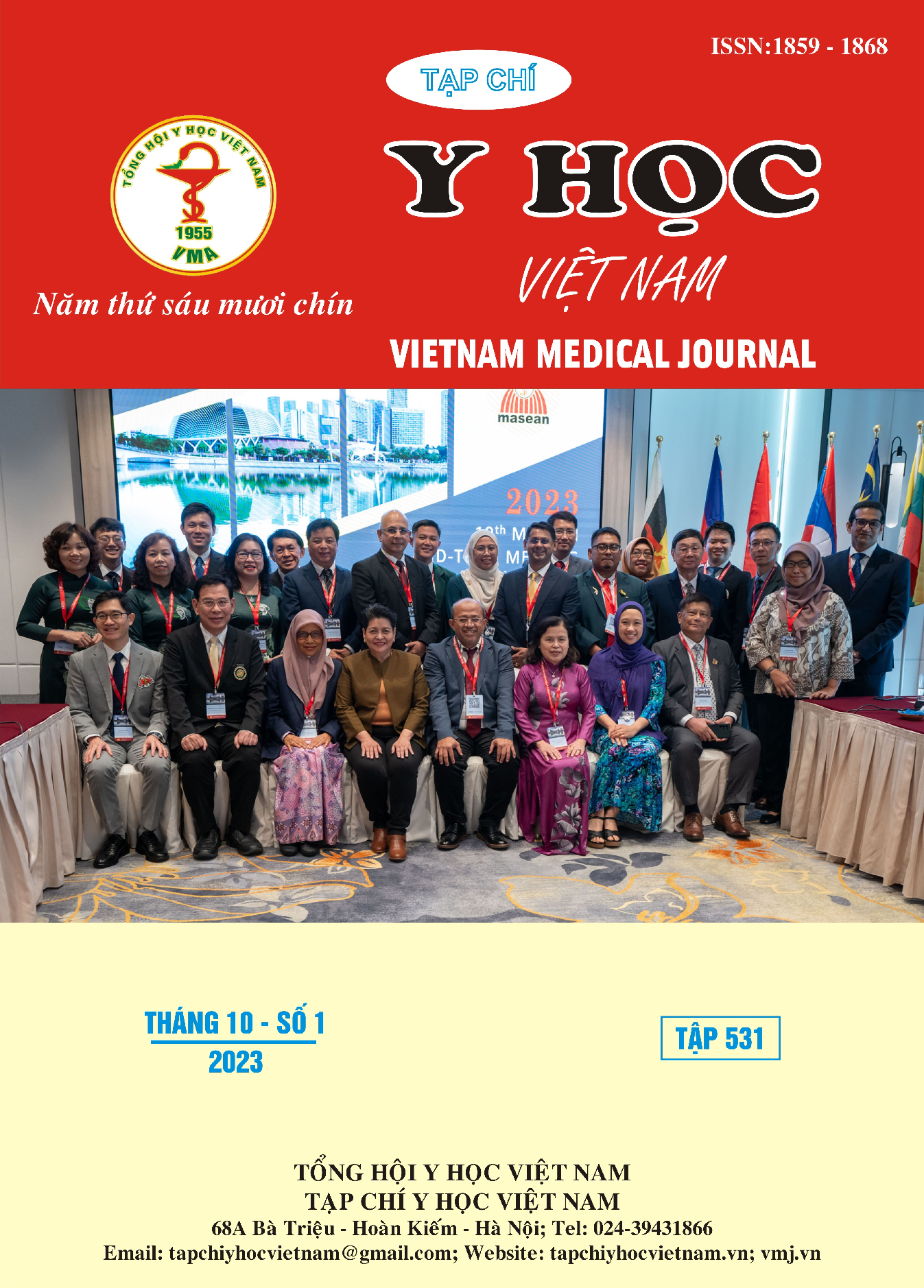TẦN SUẤT SARCOPENIA Ở BỆNH NHÂN BỆNH TIM THIẾU MÁU CỤC BỘ MẠN TÍNH
Nội dung chính của bài viết
Tóm tắt
Mục tiêu: để đánh giá tần suất sarcopenia và mối quan hệ giữa sarcopenia với một số đặc điểm lâm sàng và xét nghiệm ở bệnh nhân bệnh tim thiếu máu cục bộ mạn tính. Phương pháp: Một nghiên cứu cắt ngang ở bệnh nhân bệnh tim thiếu máu cục bộ mạn tính, điều trị tại khoa can thiệp tim mạch, Bệnh viện Quân y 103 từ tháng 4/2022 tới tháng 10/2022. Chẩn đoán sarcopenia dựa trên khối cơ, sức cơ, và khả năng thực hiện động tác, theo tiêu chuẩn của nhóm làm việc sarcopenia Châu Á (AWGS 2019). Các thông tin chung và đặc điểm lâm sàng, xét nghiệm ở đối tượng nghiên cứu cũng được thu thập. Kết quả: Mẫu nghiên cứu gồm 52 bệnh nhân với tuổi trung bình là 66,4 ± 10,2 tuổi. Tần suất sarcopenia, sarcopenia mức độ nặng và sarcopenic-béo phì lần lượt là 36,5%, 32,7% và 1,9%. Sarcopenia phổ biến hơn ở nam giới, tuổi cao. Bệnh nhân sarcopenia hầu hết các chỉ số nhân trắc đều thấp hơn so với bệnh nhân không có sarcopenia, sự khác biệt có ý nghĩa ở vòng eo, vòng hông, chu vi giữa cánh tay, chu vi bắp chân. Kết luận: Tần suất sarcopenia ở bệnh nhân bệnh tim thiếu máu cục bộ là cao, đặc biệt ở nam giới, cao tuổi. Các nghiên cứu với mẫu lớn hơn, nghiên cứu tác động của sarcopenia tới kết quả lâm sàng ở bệnh nhân bệnh tim mạch nói chung và bệnh tim thiếu máu cục bộ mạn tính nói riêng là cần thiết.
Chi tiết bài viết
Từ khóa
Sarcopenia, bệnh tim thiếu máu cục bộ mạn tính
Tài liệu tham khảo
2. Roth Gregory A, Mensah George A, Johnson Catherine O et al. (2020), "Global burden of cardiovascular diseases and risk factors, 1990–2019: update from the GBD 2019 study", Journal of the American College of Cardiology 76(25), pp. 2982-3021.
3. Santana Natália De Moraes, Mendes Roberta Maria Lins, Silva Nadja Fernandes Da et al. (2019), "Sarcopenia and sarcopenic obesity as prognostic predictors in hospitalized elderly patients with acute myocardial infarction", Einstein (Sao Paulo) 17
4. Bekfani Tarek, Pellicori Pierpaolo, Morris Daniel A et al. (2016), "Sarcopenia in patients with heart failure with preserved ejection fraction: Impact on muscle strength, exercise capacity and quality of life", International journal of cardiology 222 (pp. 41-46.
5. Chen Liang-Kung, Woo Jean, Assantachai Prasert et al. (2020), "Asian Working Group for Sarcopenia: 2019 consensus update on sarcopenia diagnosis and treatment", Journal of the American Medical Directors Association 21(3), pp. 300-307. e2.
6. Baumgartner Richard N, Koehler Kathleen M, Gallagher Dympna et al. (1998), "Epidemiology of sarcopenia among the elderly in New Mexico", American journal of epidemiology 147(8), pp. 755-763.
7. Chin Sang Ouk, Rhee Sang Youl, Chon Suk et al. (2013), "Sarcopenia is independently associated with cardiovascular disease in older Korean adults: the Korea National Health and Nutrition Examination Survey (KNHANES) from 2009", PloS one 8(3), pp. e60119.
8. Han Peipei, Yu Hairui, Ma Yixuan et al. (2017), "The increased risk of sarcopenia in patients with cardiovascular risk factors in Suburb-Dwelling older Chinese using the AWGS definition", Scientific reports 7(1), pp. 1-7.
9. Cruz-Jentoft A. J, Baeyens J. P, Bauer J. M et al. (2010), "Sarcopenia: European consensus on definition and diagnosisReport of the European Working Group on Sarcopenia in Older PeopleA. J. Cruz-Gentoft et al", Age and ageing 39(4), pp. 412-423.


